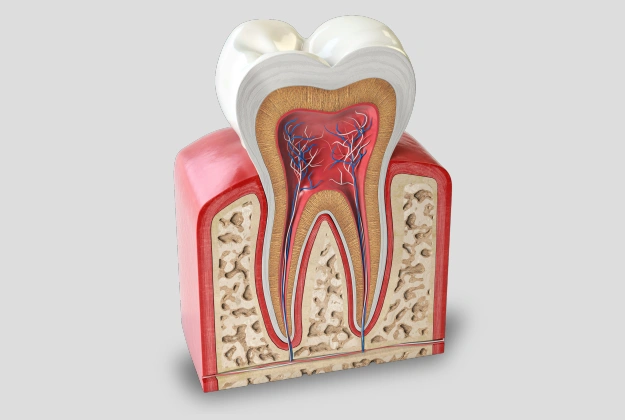After-Work Appointments For New Patients Now Available Until 8pm!

Gentle Pain-free Root Canal
At Camarillo Premier Dental, we understand that the thought of a root canal can be intimidating. However, root canal therapy is a highly effective treatment that can save a damaged tooth and relieve pain. Our experienced team is dedicated to providing gentle, pain-free root canal procedures to restore your oral health and keep your smile intact.
What is a Root Canal?
A root canal is a dental procedure designed to remove infected or damaged tissue from the inside of a tooth. This treatment is necessary when the tooth’s pulp—containing nerves and blood vessels—becomes infected due to deep decay, cracks, or trauma. A root canal can:
- Save a Tooth: Prevent the need for extraction by treating the infection and preserving the natural tooth structure.
- Relieve Pain: Eliminate the source of tooth pain and discomfort caused by infection or abscess.
- Restore Function: Allow you to chew and bite normally without the pain or sensitivity associated with an infected tooth.
Signs You May Need a Root Canal
If you experience any of the following symptoms, you may need a root canal:
- Severe Tooth Pain: Persistent or throbbing pain that worsens when you bite or chew.
- Sensitivity: Prolonged sensitivity to hot or cold temperatures, even after the stimulus is removed.
- Swollen or Tender Gums: Swelling, tenderness, or the presence of a pimple-like bump on the gums.
- Darkening of the Tooth: Discoloration or darkening of a tooth, indicating internal damage.
- Abscess: A visible abscess or pus discharge near the affected tooth.
The Root Canal Process
Discover the root canal process for a pain-free, healthier smile at Camarillo Premier Dental.
1
Consultation and Examination
We start with a thorough examination, including digital X-rays, to assess the extent of the infection and determine if a root canal is necessary.
2
Anesthesia
To ensure your comfort, the affected area is numbed with a local anesthetic.
3
Pulp Removal
A small opening is made in the tooth to access the pulp. The infected or damaged tissue is carefully removed, and the inside of the tooth is cleaned and disinfected.
4
Filling and Sealing
The cleaned space is filled with a biocompatible material called gutta-percha, and the tooth is sealed to prevent future infection.
5
Restoration
After a root canal, the tooth may need a dental crown to restore its strength and functionality, especially if it’s a molar.
Post-treatment Care
After your root canal, follow these tips to maintain your restored tooth and overall oral health:
- Practice Good Oral Hygiene: Brush and floss daily to keep your teeth and gums healthy.
- Avoid Hard Foods: Be cautious with hard or sticky foods that could damage your restoration.
- Regular Dental Check-Ups: Routine visits allow us to monitor your restored tooth and address any concerns early.


